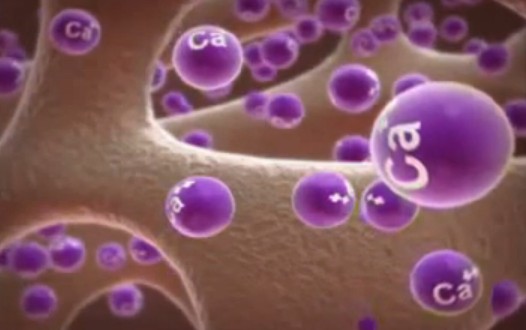Vitamin D is essential for maintaining the levels of calcium and phosphorous in the body. It is a type of fat-soluble vitamin which primarily helps strengthen the bones, and facilitate the absorption of calcium occurring in digested food into the bloodstream.
Vitamin D3 and vitamin D2 are the two main forms of vitamin D. D3 can be absorbed by intake of certain foods, and via contact with morning sunshine, while D2 is available in plants. The liver and kidney also have a vital role to play in vitamin D absorption. They convert the biologically passive vitamin D into its active types, i.e., calcidiol and calcitriol respectively.
The functions of Vitamin D
Some of the major functions of Vitamin D are listed below:
- It manages the flow of calcium to the bones via bloodstream and vice versa.
- It promotes anti-tumor activities.
- It boosts the immune system functions.
- It regulates the secretion of parathyroid hormone by the parathyroid organ.
- It prevents the softening of bones, i.e. rickets, in children.
- It plays an important role in bone restructuring and bone growth via osteoclasts and osteoblasts.
- It helps in the prevention of diabetes and obesity
- It is important to fighting prostate cancer, depression, osteoporosis, certain cardiovascular conditions, breast cancer, phagocytic activity, hypertension, etc.
- It also helps prevent osteomalacia, i.e. a type of bone-thinning disease, in adults. Fragile and weakened bones are prone to persistent fractures. Individuals affected by the disease tend to suffer from musculoskeletal pain.
The recommended daily consumption of Vitamin D
It is understood that rickets in children can be prevented with a daily dose of 200 to 400 IU or international units. This is however inadequate to maintain the general health.
Research institutes have suggested that the upper level of vitamin D intake for infants less than one year old is 1,000 IU or 25 mcg of vitamin D, while that for lactating and pregnant women, children, and adults is 2,000 IU or 50 mcg.
It is also important to note that unlike the current suggestion of a recommended intake of 200 to 400 IU, many medical experts are of the opinion that a minimum of 2000 to 4000 IU of vitamin D from all sources is needed on a daily basis.

Causes of diminished Vitamin D absorption
As discussed above, vitamin D comes from exposure to sunlight and intake of certain foods. The kidneys and liver are the organs that convert this relatively inert nutrient into its active form.
Most kinds of milk as well as animal foods are rich vitamin D3. Liver, cod liver oil, egg yolks, halibut liver oil, and fatty fish such as salmon, kippers, tuna, and herrings are other good sources.
Some of the common causes of vitamin D deficiency are listed below:
- Inadequate intake in diet
- Intake of steroids as anti-inflammatory drugs. Such medications tend to weaken the metabolism of vitamin D and reduce absorption of calcium.
- Impaired liver or kidney function which results in failed conversion of this vitamin into the active hormone form.
- Decreased contact with sunlight.
- Underlying gastrointestinal conditions which affect the process of vitamin absorption from the intestine.
- The rate of Vitamin D absorption: The symptoms of vitamin D deficiency are usually observed in post-menopausal women, Alzheimer’s disease patients, and the elderly. Such people generally have low levels of energy and hence stay indoors. Thus, they are unable to get sufficient sunlight exposure.Aging also results in impaired ability of the skin to convert vitamin D into its active form.
- Deficiency of vitamin D also indicates that affected individuals can absorb just ten to 15 percent of the dietary calcium. Healthy people are typically able to absorb about 30 percent of dietary calcium. It may also be noted that calcium absorption rate is automatically increased by the body to nearly 80 percent in teenagers experiencing growth spurts, and in lactating or pregnant women as a response to their changed bodily needs.
Improving the rate of Vitamin D absorption
Some of the ways to improve vitamin D absorption and lower its deficiency are discussed below:
- Intake of a balanced diet that has foods abundant in vitamin D as well as minerals. This is because low percentage of magnesium, zinc, calcium, and other minerals in diet can cause vitamin D supplementation to take calcium from bones as well as facilitate the uptake of poisonous minerals.
- Intake of vitamin supplements in pill or liquid form. The process of vitamin D absorption is also enhanced with regular consumption of vitamin K, vitamin A, and boron.
- Research shows that obesity increases the risk to vitamin D deficiency. Vitamin D is set deep inside the fat tissues and hence the body cannot use it properly. Therefore maintain proper body weight.
- Spend sufficient time out under the sun as per your skin pigmentation and race. Caucasians need to spend lesser amount of time outside in the sun as opposed to dark skinned people. Avoid excessive sun exposure as it can cause other diseases.
- Kidney and liver functions can be adversely affected with excessive use of sugar, caffeine, tobacco, and alcohol. Hence, avoid them.